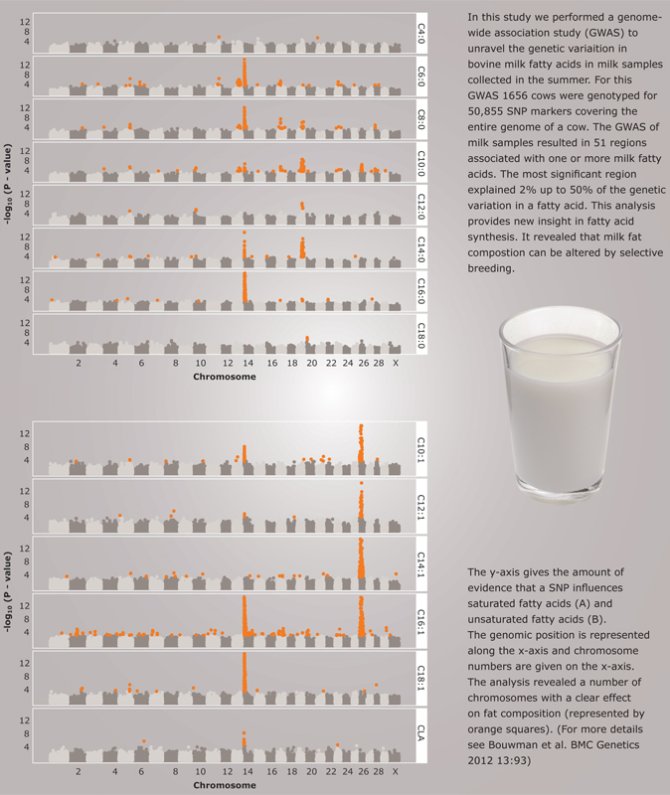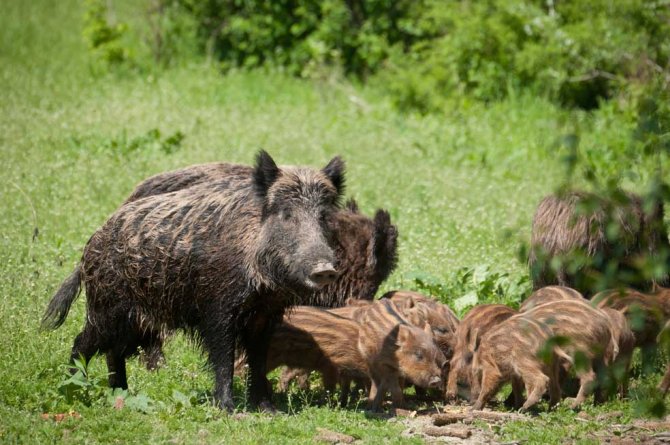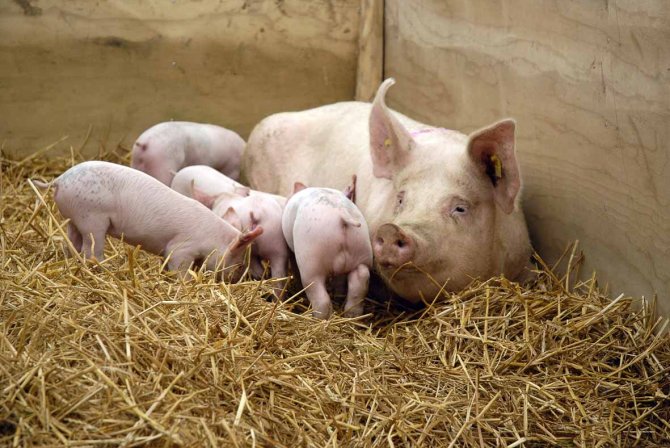Animal genomics
As a result of balanced breeding programmes, cows, chickens and pigs are supplying more and more eggs, meat and dairy products. Attention for welfare, lifespan and feed efficiency is essential to prevent the consequences of a unilateral selection for productivity. Genomic selection gives breeders new opportunities to meet the increasing demand for animal protein in a sustainable and animal-friendly way.
Until recently, the work of breeders revolved primarily around studying and observing traits such as productivity, disease resistance and longevity. Information on phenotypes was combined with pedigree information to infer the size of genetic variation and the opportunities to improve traits by selection. The unravelling of the genome of an increasing number of species is giving breeders a brand-new tool which will drastically change the perspective on traits and the value of animals for breeding in the coming years. This offers unique opportunities to contribute to the challenge of the future: Production systems with healthy animals that supply more with less input. Genetic knowledge can also help us select more social animals, which will influence welfare positively, or cattle with a reduced environmental impact, for example by limiting methane emissions.
Genetic variation measured at the DNA level is two to three times larger within most commercial pig breeds than within humans
Johan van Arendonk, professor of animal breeding and genetics explains: "Innovations are crucial in order to meet the global demand for high-quality animal protein in a sustainable way. Intelligent breeding programmes are necessary to increase the efficiency of the food chain, minimise the ecological footprint, address changing consumer demands and contribute to the wellbeing of people and animals alike."
Research into the pig genome has provided important insights into the effects of domestication, animal behaviour and environmental impact, which could not easily be detected by traditional breeding.
Exploring pigs
An important key to more specific and effective animal breeding is contained within our knowledge of genomes. After the genome of the chicken, cow, mouse, dog, tomato and human, the genome of the pig was sequenced at the end of 2012 by an international research team, co-headed by Wageningen UR professor Martien Groenen. His team of scientists investigated genetic similarities and variations between various domesticated and wild pig species in Europe and Asia. A remarkable finding was that genetic variation measured at the DNA level is two to three times larger within most commercial pig breeds than within humans.
Humans and pigs share a history that dates back 10,000 years to a time when people in Europe and Asia independently started domesticating this animal. Since then, the pig has been a major source of animal protein and pork has become the most commonly consumed meat in the world. The annual production and consumption is now some 100 billion kilos. Research into the pig genome has provided important insights into the effects of domestication; for example, pigs have become taller and domesticated breeds have up to four vertebrae more than wild pigs. The effects of domestication on genetic variation have also been mapped as part of the research, providing insights that can be used to improve currently used pig breeds.
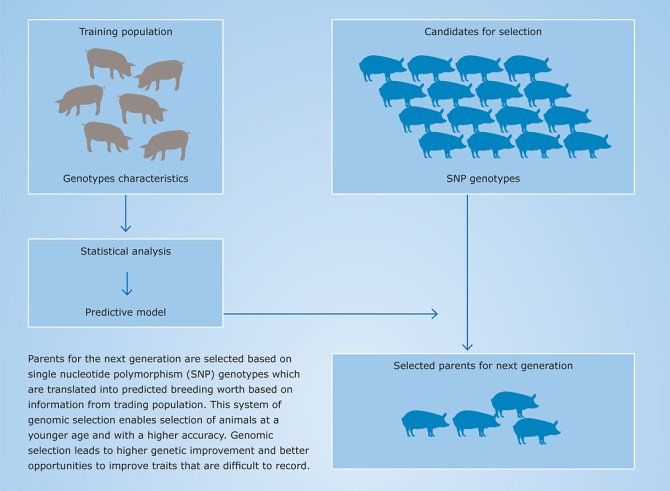
Characteristics
With our new knowledge of the genome, breeding can be more effective for characteristics that are difficult to measure in practice. Utilisation of genomic information in breeding is often referred to as genomic selection and used, for example, for pigs to select against boar taint. Pedigree information to relate animals in the slaughterhouse and parents in breeding lines is generally lacking. As a consequence, an observation of boar taint in slaughterhouses cannot be used in the selection of parents in the breeding line. However, the ability to collect genomic information on a large scale allows breeders to use data from slaughterhouses in selecting parents that produce offspring with little or no boar taint. Other opportunities for genomic selection on difficult traits are available in the field of health, methane emissions from cattle, sensitivity to climate and product quality.
Thanks to the rapid technological developments it is possible to determine the complete genome sequence of multiple individuals within a population. By applying bioinformatics, this genome data provides a wealth of information about the origin of genetic variation in traits and the impact of selection on the genome. The selection of parents for the next generation forms the basis for genetic improvements resulting from breeding programmes. Being able to detect animals with good genetic characteristics at an early stage is essential. By applying DNA knowledge it is no longer necessary to wait for information on their offspring. This form of selection has recently been applied to dairy cattle for a wide range of traits, and the first steps in poultry and pig are also being taken. There are huge opportunities for the improvement of breeding programmes in which information collected at farms or slaughterhouses is used more effectively. The application for boar taint is only one of many examples.
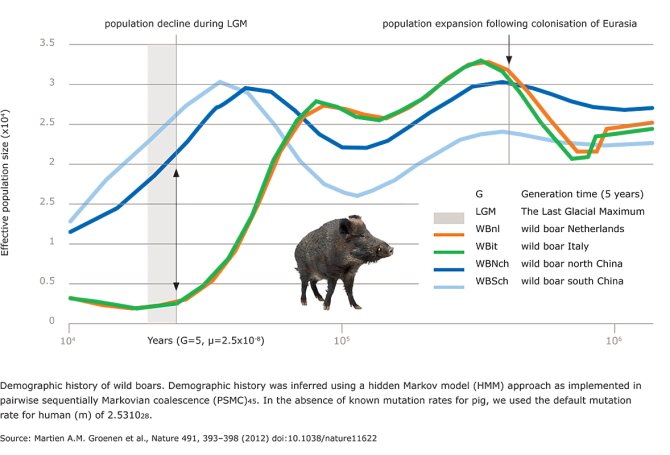
Genomics
The development of sustainable breeding programmes requires better insights into the importance of genetic differences between animals. Within this framework, genomics offers a unique opportunity to trace functional mutations that contribute to genetic variation between animals. The research also provides further insights into mechanisms that form the foundation for the relationship between traits; knowledge that is important to gain an insight into trade-offs between traits and to prevent any unwanted effects of selection. Genomic selection also offers good opportunities for breeding programmes in countries with no systematic registration of pedigrees and traits. After all, breeding principles are universal. As long as the implementation is adapted to the conditions, local species can be further improved while maintaining their often unique characteristics."
